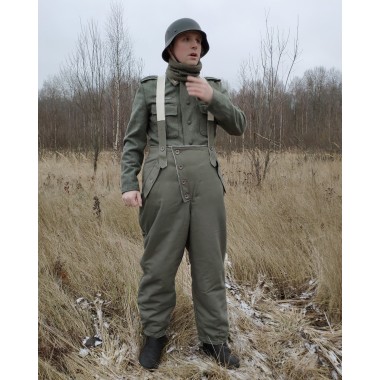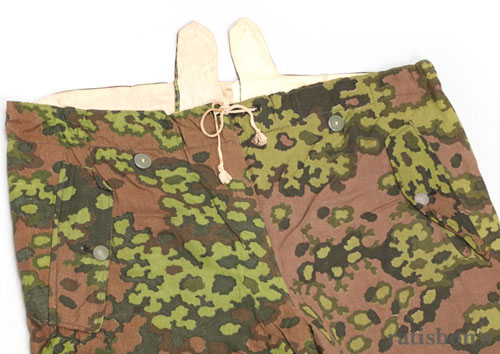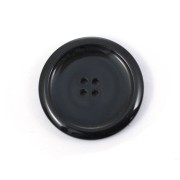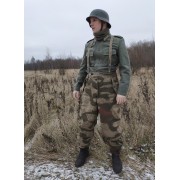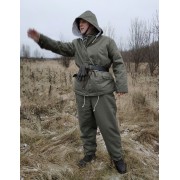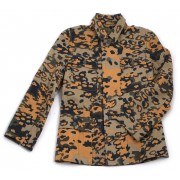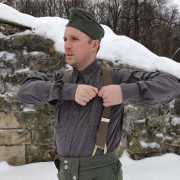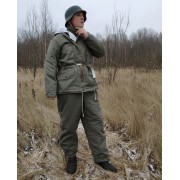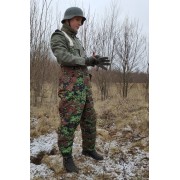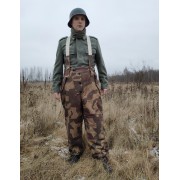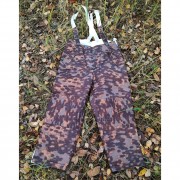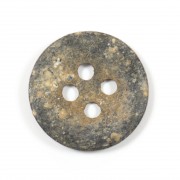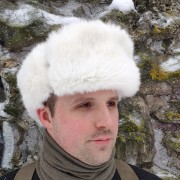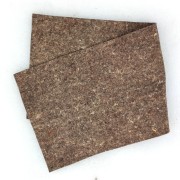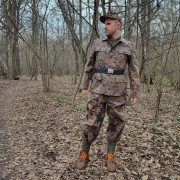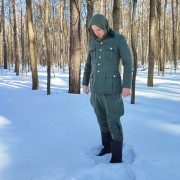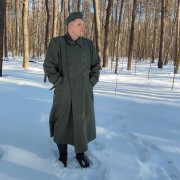How to choose the size?
A new batch of pants will be ready in October 2022.
The price is only for the pants. Suitable jacket is sold separately. See the recommended products at the bottom of the page. Buy pants and jacket at once to get a set. The color and material may change slightly with each new batch, you can't buy a part of the set in addition later, we will not be able to select the matching fabric!
In the product photo: size II (medium) is worn on a person who usually wears Russian size 52 or L, XL. Height 180 cm, chest 100 cm, body circumference under the lower rib 92 cm, belly circumference 98 cm. The key size for the pants is the circumference under the rib! If this body part fits into the pants, then the belly will definitely fit.
The size of the jacket fits the size of the pants, that is, the jacket and pants must be bought in the same size. If you wear a tunic of size M, then you need to buy a winter jacket M (that is, size I), you should not add the size "for the winter", everything has already been added. The standart height for the jackets and pants is 182 cm. This affects the length of the sleeves for jackets and the length of the legs for pants. German winter jackets were of three sizes: small, medium and large; we did the same. German winter jackets are made wide enough not to fetter a soldier and to fit different body-shapes; this must be understood if you are not buying a jacket for reenactment, but for civilian use.
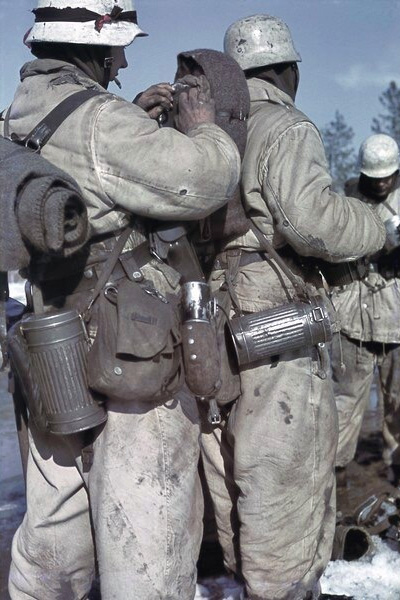
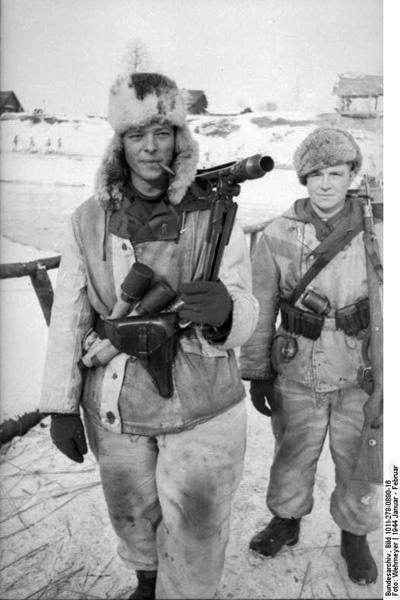
German soldiers in winter suits, turned white side out. Please note that jackets and pants are quite wide.
Usually, German winter and camouflage clothing was made in only three sizes: small (I), medium (II) and large (III).
To measure your waist, you will need a flexible meter or at least a rope. You should compare measurements from our size chart with any pants that fit you.
• Suitable clothing size — approximate compliance with general sizes, to start with. Next, you need to check the rest of the measurements! Several sizes of clothing are included in one pants size, since winter uniforms are usually large, and the difference of 1 standard size is not noticeable.
• The waist is maximum — the girth below the rib, but above the navel, where the Germans worn the waistbelt. The first number is measurement on the naked body (in brackets, it was measured over the shirt + sweater + jacket, as it is customary to wear these pants). The number shows the maximum waist, that is, your measurement should be less than in the table, to 5 or more centimeters. Pants should not sit tight at the waist! There should be a gap at the waist, which, if necessary, is tightened with a lace-tie on the back. If there is no gap, then it will be difficult to bend down in your pants.
• Width of the pants on the upper edge — the pants are lying flat on the floor, you measure along the back half of the pants (it is wider than the front one). You can compare it with any winter pants, but please remember: these pants do not have a waist, they are tightened at the waist with a flap. This measurement is only needed here for reference. The pants will fit almost any large waist, as they have no waistband.
• Pant leg length at the inner seam — the length of the pant leg from the "fork" to the bottom, this is the most important size for determining the height, you need to compare with other pants that you wear. "Burdocks" at the bottom of the pants, which should lie on top of the foot, are not taken into account when measuring the length. We don't have any other height sizes!
• Pants full length — the full length of the pants along the outer seam.
All measurements are in centimeters. Devide numbers to 2,54 to have inches.
| Size of the pants | Suitable clothing size RUS/EUR (INT) | Waist maximum naked (and over the tunic), cm | Width of the pants on the upper edge, cm | Pant leg length at the inner seam, cm | Pants full length on the side seam, cm |
| I | 46-50 (S-L) | 90 (98) | 49 | 72 | 110 |
| II | 52-54 (XL-2XL) | 103 (112) | 56 | 74 | 114 |
| III | 56-60 (3XL-5XL) | 116 (126) | 63 | 77 | 118 |
If you do not understand the table and you need help, write or call us, we will help you to find the size.
You can choose the size from those in the list near "Add to Cart" button. If we don't have any size in stock, you can't choose it. Perhaps it will appear later.
Description
Double-sided inverted winter pants (gray and white, respectively). Gray-green on the "autumn" side. The material is natural, with plain weave (such as a tent or cotton duck). Such fabric protects best from wind and water. The fabric does not get wet slowly, but is not completely waterproof, of course. The fabric is dense but not rigid. Pants match the color of a similar jacket (see related products at the bottom of the page). To get a full color match, buy a jacket and pants at the same time. The shade of the fabric may be slightly different on a new batch in a year!
This is a responsible copy from a German sample. The patterns were developed from scratch under the control of the Replika shop. The pants are sewn by professionals on a factory, using heavy sewing equipment. This high-quality copy is designed and sold only in the Replika shop.
Legs have a long slit on the side bottom with a braid to put on over the boots. Pants are worn over a summer uniform, held on suspenders. The waist is adjustable with a drawstring at the back.
The insulation from recycled clothing is used inside, as it was in the originals. The Germans collected the old uniforms, as well as civilian clothes (including trophy and confiscated) and recycled it, getting a cloth like a loose blanket. The composition of such insulation varied due to the heterogeneity of the raw materials. In general, winter suits were not very warm. They had to be worn over a shirt, a cloth uniform and a sweater (a multilayer military uniform system is used to date). In a full suit, it is comfortable down to -15 degrees Celsius, however, this is not enough for guard duty (long inactivity), for this there were a special overcoat and guard boots.
We were attentive to the details, found and copied even insignificant and inconspicuous at first glance.
Button loops have a round end (eyelet) and a perpendicular limiting seam (lock) at the other end. Not expensive copies have loops with a wedge-shaped end, because this is the norm for modern equipment, and the Germans did not use them in the mid-1940s (extremely rarely on clothes 1944-1945).
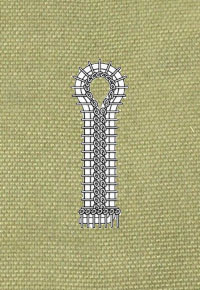 | 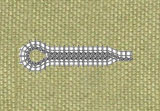 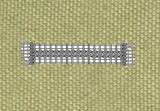 |
).
 |   |
On the left is the correct buttonhole shape for German winter suits, with a clip at the end. On the right are 2 variants of non-characteristic loops, which, however, can be found on some copies.
Pants' suspenders were usually made of braid of raw (non-bleached white) color. The ends with buttoned loops are often reinforced with camouflage or white fabric.
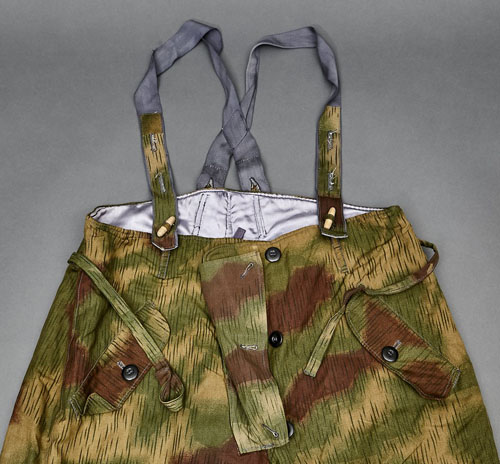
Suspenders of German winter pants in the “Swamp” camouflage are made of gray tape (most often it was a white undyed tape) and with reinforcements of camouflage fabric at the ends.
The first winter suits had metal grain buttons. However, on the trousers (the top of which is not visible under the jacket), the Germans began to use simpler buttons at once. These were flat buttons with four holes: plastic, glass, metal "plates" or synthetic resin. On a thick winter uniform, by the way, these were more convenient. Buttons for pockets often differed from those that went to the rest of the pants. As a rule, smaller buttons were placed there. We repeated all this: there are flat plastic buttons on our trousers, and metal, painted are on pockets.
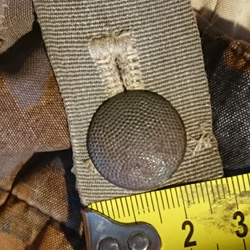
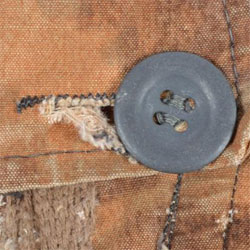
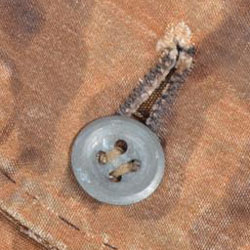
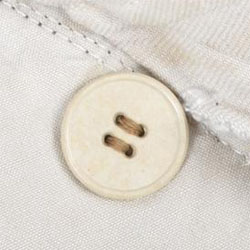
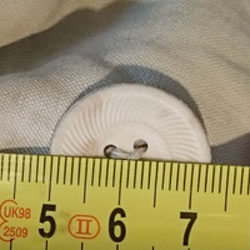
Types of original buttons on SS winter jackets (not a complete list). Original photo source: lux-military-antiques.com, Anton Volchkov and others.
German winter pants have one design flaw: the attachment of suspenders. When you squat fast, the load on the buttons that hold the suspenders on the back is so big that they come off. Only at the very end of the war did the Heer try to solve this problem by fixing suspenders to wooden bosses that were fastened to the pants through a tie (due to the large area of the mount, it withstood heavy loads). The SS tried to solve this issue when creating a camouflage winter uniform. They made straps with buttons for fixing standard elastic suspenders on them, like it's on M43 field trousers. However, this model did not go into series and until the very end of the war the problem remained. Before using pants for the first time, we recommend to stitch the buttons on the back through (one to another). This will strengthen them.
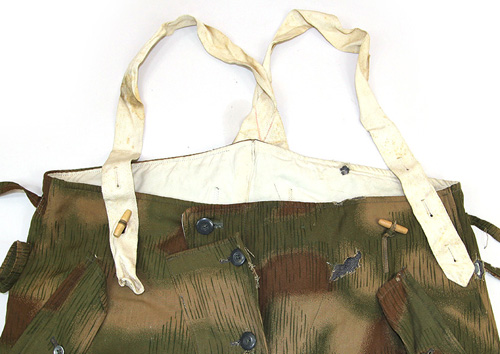
On the left are the origonal pants of the SS "Oak" (experimental cut), where the SS tried to fix the problem with the suspenders. To the right are the original “Swamp” pants of the Heer with a new suspender mount. Photos of original items from the site ratisbons.com and others.
There are no patches on the knees on this model, because the first 1942 model did not have them. There is also no counter-flap (wind-valve) on the front. These details appeared later in 1943. Access to the pockets is possible both from the "autumn" and from the "winter" side: there is a partition at the entrance so that the hand does not pass through, but falls down into the pocket. The pocket valves on the trousers are 4-point; they were 4-point both in the Heer and in the SS.
How to care for the product?
The soldiers at the front did not have the opportunity to wash their jackets (especially in the washing machine). After the winter (or in the case of taking the unit to rest in the deep rear), they handed the winter uniform over, and the rear services cleaned, sorted and stored it. Therefore, washing the winter uniform in the washing machine is an extreme measure. To get started, you just need to wash the jacket with a sponge or a soft brush with soap or detergent for natural fabrics in those places where it is dirty (usually this is the neck and cuffs). You can wash off the detergent with a jet of water (shower in the bathroom, for example).
The use of bleach (stain remover) is permissible only manually on the white side and on a dry jacket. So you can return the whiteness to the cuffs and other dirty areas. However, if bleach seeps onto the camouflage side (for example, through a seam), white spots will forever remain. It is unacceptable to wash the entire jacket in bleach!
Washing a jacket is the removal of contaminants from external surfaces; inside the jacket there is nothing to wash. If you decide to save time and wash in a machine, then select the delicate washing mode at a temperature of no higher than 40 degrees. The jacket will not deteriorate, the color will not fade, however, the jacket will slightly lose its shape and will no longer look like new.
Historical reference.
The original of these pants (in good condition) cost more than $1000 among collectors.










